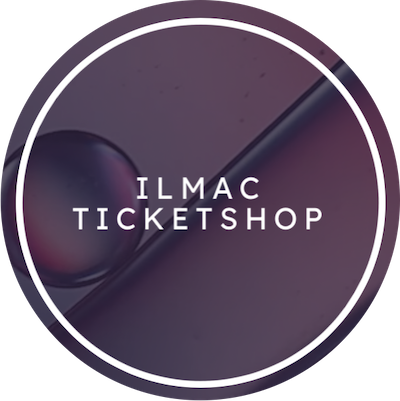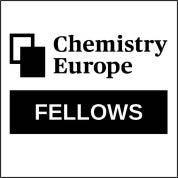Register for free to join Ilmac and Ilmac Conference 2023
Platform for Chemistry, Pharmacy and Biotechnology
September 26–28, 2023, Messe Basel, www.ilmac.ch
Ilmac has its origins in the Swiss trade fair for international laboratory, measurement technology and automation in chemistry, which has been taking place since 1959. Today, the chemical and life science brand connects the industry both physically and digitally.
With the performance promise "Inspiring the Future of Chemistry and Life Sciences", it encourages the development of new ideas and solutions and presents trends and innovations by research and industry in important locations such as Basel and Lausanne.
The SCS, as the initial founder of the fair, is partnering with Messe Schweiz and coordinates the collaboration with society partners and the Universities of Applies Sciences. The SCS and its partner societies, SVC and SBA, are also the official organizer of the Ilmac Conference. Registration for Participants
Registration for Participants
Register for free as participant with the SCS Promocode: scs-ilmac23.
Link to the Ticket Shop
More information about the Ilmac and the activities of the Swiss Chemical Society are available on https://scg.ch/ilmac
We are looking forward to welcoming you in Basel in late September!
David Spichiger, SCS
01.06.2023
EuChemS Magazine, May 2023
Find our monthly compilation of chemistry- and science-related European policy developments in this newsletter! You will also find EuChemS' activities and news here.
Policy News
- 2023 UN convention meetings held on chemicals and waste
- Commission publishes results of Horizon Consultation
- CLP draft report discussed at the European Parliament
- VERITY project launched to promote trust in science
EuChemS News
- The role of Chemicals in our daily life: The Phosphorus element – feeding the world and beyond
- OPCW’S Centre for Chemistry and Technology opened
- 4th Zero Pollution Stakeholder Platform Meeting held – EuChemS Participates
- EuChemS contributes to Commission's task force on Circularity
Events & Awards
- NeXT-Chem: Innovative cross-sectoral technologies Exploratory Workshop
- 13th International Conference on the History of Chemistry (13ICHC)
- XIV International School on Organometallic Chemistry Marcial Moreno Mañas (ISOC-MMM2023)
David Spichiger, SCS
19.05.2023
SCS Scientific Award Program 2024: Call for Nominations
 As one of our four strategic pillars, SCS awards excellence in science and chemistry respectively and is proud of its renowned award program that goes back to 1936 with the ceremony of the first Werner Prizes to Dr. T. Postenak, Genève, and Prof. G. Schwarzenbach, Zurich.
As one of our four strategic pillars, SCS awards excellence in science and chemistry respectively and is proud of its renowned award program that goes back to 1936 with the ceremony of the first Werner Prizes to Dr. T. Postenak, Genève, and Prof. G. Schwarzenbach, Zurich.
The Society opens the call for nominations for the SCS Awards 2024. Nominations have to be submitted electronically to . The deadline for all documents to reach the Swiss Chemical Society is September 30.
Paracelsus Prize
CHF 20 000 and medal in gold awarded to an internationally outstanding scientist for his/her lifetime achievements in chemical research
Werner Prize
CHF 10'000 and medal in bronze. Awarded to a promising young scientist for outstanding independent chemical research.
Sandmeyer Award
CHF 10'000 for individuals or CHF 20'000 for groups. Awarded to a person or to a group for outstanding work in industrial or applied chemistry.
SCS Industrial Science Awards
This program includes awards on three career levels with cash checks of CHF 7'000, 10'000 and 15’000. It honors active industrial scientists working in Switzerland for their outstanding contributions in industrial R&D.
Green & Sustainable Chemistry Award
CHF 10’000. Honors outstanding scientific discoveries that lay the foundation for environmentally friendly approaches and products. It is supported by Syngenta as founding partner and SusChem Switzerland as hosting institution.
Balmer Prize
CHF 2'000 for individuals and CHF 2'000 for the school’s chemistry department or CHF 3'000 for a group and CHF 1'000 for the school’s chemistry department. Awarded to a teacher working in Switzerland at high school (gymnasium) level for innovation in chemistry teaching.
Dr. Max Lüthi Award
CHF 1'000 and medal in bronze. Presented for an outstanding diploma thesis in Chemistry conducted at a Swiss University of Applied Sciences.
METAS Award
CHF 5’000. Honors outstanding contribution to the field of metrology in chemistry and/or biology.
Cancer Drug Discovery Research Award
CHF 10'000 in total for 2-4 winners. The award (supported by RGCC International) honors outstanding scientific achievements of MSc, PhD students or Postdocs from Switzerland that are working in the field of cancer drug discovery research.
DMCCB PhD Prize
Certificate and cash check of CHF 1’500. The prize is for exceptional PhD theses in the field of Medicinal Chemistry and/or Chemical Biology completed at a Swiss University or ETH/EPF
DIAC Fellowship Award
CHF 1'000 and lecture tour in Switzerland. The distinction is granted to distinguished scientists from Industry for significant contributions and innovations over many years in the field of industrial chemistry and chemical process technology in Switzerland.
Thanks to our Supporters
The SCS Award Programs are supported by the SCS Prize Funds, Novartis, Roche and Syngenta and the SCS Partnership Companies.
David Spichiger, SCS
10.05.2023
Call for Nominations: Chemistry Europe Fellows 2023
 The Chemistry Europe Fellows Program was established in 2015 by the Chemistry Europe Presidents and Representatives to recognize members of the Chemistry Europe societies for their outstanding achievements and contributions to Chemistry Europe and their service to at least one member society.
The Chemistry Europe Fellows Program was established in 2015 by the Chemistry Europe Presidents and Representatives to recognize members of the Chemistry Europe societies for their outstanding achievements and contributions to Chemistry Europe and their service to at least one member society.
The program is established to foster the identity of Chemistry Europe within continental Europe but is not limited to that continent. It is the highest honor given by Chemistry Europe.
Fellows receive a certificate and retain the designation as Chemistry Europe Fellow for life. The list of all Swiss based Fellows as well as the link to all Fellows is available on the SCS CE Fellow Website.
The Chemistry Europe Fellows will be announced and honored at the biannual EuChemS conference or during appropriate national meetings in the years in-between.
If you would like to nominate someone, please fill in the form before September 30, 2023. Self-nominations are not accepted.
More information: chemistryviews.org/fellows
David Spichiger, SCS
Karl Gademann, Swiss Representative in Chemistry Europe, UZH
09.05.2023
Minutes of the 33. General Assembly of the Swiss Chemical Society
 April 14, 2023, 13:30-14:00, University of Zurich, Irchel Campus, lecture hall G40. The minutes are published in CHIMIA 5/2023 and on the website.
April 14, 2023, 13:30-14:00, University of Zurich, Irchel Campus, lecture hall G40. The minutes are published in CHIMIA 5/2023 and on the website.
1. Welcome; Approval of the Agenda
During the lunch break of the SCS Spring Meeting, Christian Bochet, President, and David Spichiger, Executive Director, opened the assembly and welcomed all members/attendees. The agenda was approved.
2. Election of the Vote Counter
At the beginning 21 SCS members were present and until the end of the assembly 35 participants joined the assembly. In consideration of the manageable number of votes, David Spichiger proposed to take over the counting. The assembly approved the proposal unanimously.
3. Minutes from the 32st GA from April 22, 2022
The minutes were published in CHIMIA (2022, 76, No. 5, A496f).
The minutes were approved unanimously and without abstention.
4. Annual Report 2022
The annual report was published in CHIMIA (2023, 77, No. 1-2, A91ff). It was approved unanimously.
5. Financial Report 2022 and Audit Report
David Spichiger presented the financial statement. Operating incomes of CHF 1’827’926 and operating expenses of CHF -1’830’336 result in an operating loss before taxes of CHF -2’410. The portfolio at Bank von Graffenried followed the trend of the financial markets and a loss of -485’330 resulted. Considering taxes, non-periodic income, cost allocation to the funds and the dissolution of 450’000 asset fluctuation buffer an overall surplus of CHF +103’921 resulted.
The assets of all SCS funds decreased by CHF -154’901.
As of 31.12.2022 the assets summed up to CHF 4’566’936.
Audit Report: In the audit report from April 4, 2023, provided by BDO AG, Bern, no inconsistencies are mentioned, and the financial statement fulfills the legal requirements according to the SCS bylaws and the Swiss Civil law.
The assembly approved the financial statement 2022 and the audit report unanimously with no abstention.
6. Discharge the Organs of the Society
The assembly discharged the board members and the financial audit unanimously with four abstentions.
7a. Elections: SCS Executive Board, ExB (and BoD)
The assembly confirmed unanimously
- Maud Reiter, Firmenich SA, as treasurer and member with signing rights in twos for a second term (2024-2026). As ExB member, she also takes a seat on the Board of Directors ex-officio.
7b. Elections: SCS Board of Directors, BoD, and Financial Audit
The assembly confirmed the re-elections for a second term of:
- Leslie Fendt, F. Hoffmann-La Roche AG (2024-2026)
- Corinne Jud, Agroscope (2024-2026)
The assembly elected:
- Tomas Bürgi, University of Geneva, as member (and president of the Division Fundamental Research) with no signing rights.
The three elected persons accepted their election.
The following BoD member stepped down and the entry in the commercial register will be deleted with immediate effect.
- Stefan Willitsch, University of Basel.
The assembly confirmed BDO AG, Bern unanimously as audit instance for the financials 2023.
8. Membership fees
The annual membership fees 2024 were approved unanimously:
Regular member CHF 150.00
Student member CHF 50.00
Retired member / unemployed members CHF 80.00
Institutional member (institutions) CHF 800.00
SCS Partnership (institutions) CHF 3’000.00
Additional Fees for Divisions
Industrial & Applied Chemistry - Regular/Student CHF 20.00
- Company CHF 100.00
Photochemistry Section - Regular CHF 40.00
- Student CHF 20.00
15% discount on collective memberships for university research groups.
9. News and Strategic Projects
The Board of Directors decided on the following, strategic initiatives that will be pushed in the coming months:
- Establish the network to stimulate industry jobs for Ph.D. students and internships for MSc.
- Further strengthen relationship to industry and include industrial speakers in teaching at Universities and Summer Schools.
- Implement SCS Mentoring Program to accelerate the personal and professional development of mentees. The focus of the SCS Mentoring Program is on career development.
- Merger of the Division Polymers, Colloids and Interfaces with the Materials Chemistry network as of January 2024.
10. Event Outlook 2023
In 2023 twenty-nine conferences and symposia took place or will take place under the direct organization of SCS. In addition, four SCS Lectureship are planned and a dozen of smaller, local, events will be organized.
The list of SCS events is updated regularly and is available on http://scg.ch/events.
11. Varia
No requests to speak were requested from the audience. The President thanked for the confidence and closed the meeting.
Zurich, April 14, 2023
Prof. Christian Bochet David Spichiger
President Executive Director
Documents
David Spichiger, SCS
21.04.2023
Page 20 of 304


